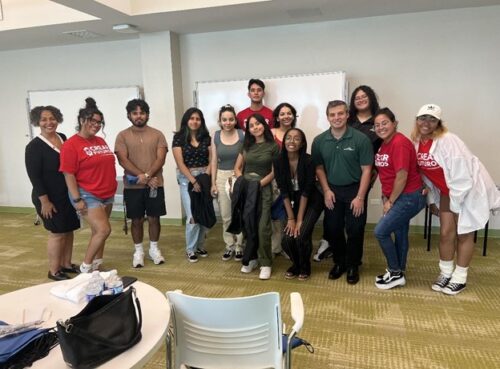Photo: Griskarly Sena
‘Fast fashion’ clothing costs less because it is manufactured cheaply. Some people are sold at great prices, but do not understand the production process these clothes go through before they become trendy. Fast fashion is of low quality, but since it is rapidly produced, there is always a new style, a new trend.
Stores that are more sustainable and do not rely on the fast fashion market tend to carry smaller sizes. According to Olivia Muenter, “Still, even if every slow-fashion brand did offer plus sizes, the fact remains that most plus-size shoppers have a very different experience with style and clothing than straight-size shoppers have — and as long as fat bias and discrimination exist, this will remain the case.” This is an inconvenience when you are not the “standard” small, medium, and large. People that do not fall under the “standard” sizes have a harder time shopping, so they turn to fast fashion stores.
Clementine Asuquo, a junior at SUNY Old Westbury currently majoring in accounting, believes that fast fashion can have good and bad qualities. “We live in a world where many things are bad for us. In balancing affordability and sustainability, I always look for quality over quantity, so I do not have to go back and buy again. Fast fashion is not something I want to turn to all the time, but financial decisions will be made.”
Fast fashion does help people who struggle with the high cost of clothing. “Sometimes, I am like, ‘would I pay 50 dollars for a plain black t-shirt or get one for 5 dollars,’” said Asuquo. Thrift stores are a good alternative to fast fashion. According to Goodwill, “When you thrift something, you are not directly supporting the demand for new things to be made, and this has a positive impact since resources and energy were already used to create that item.” Instead of throwing out clothes, you can donate them or hand them to another party. This helps reuse clothes which will benefit the environment.







